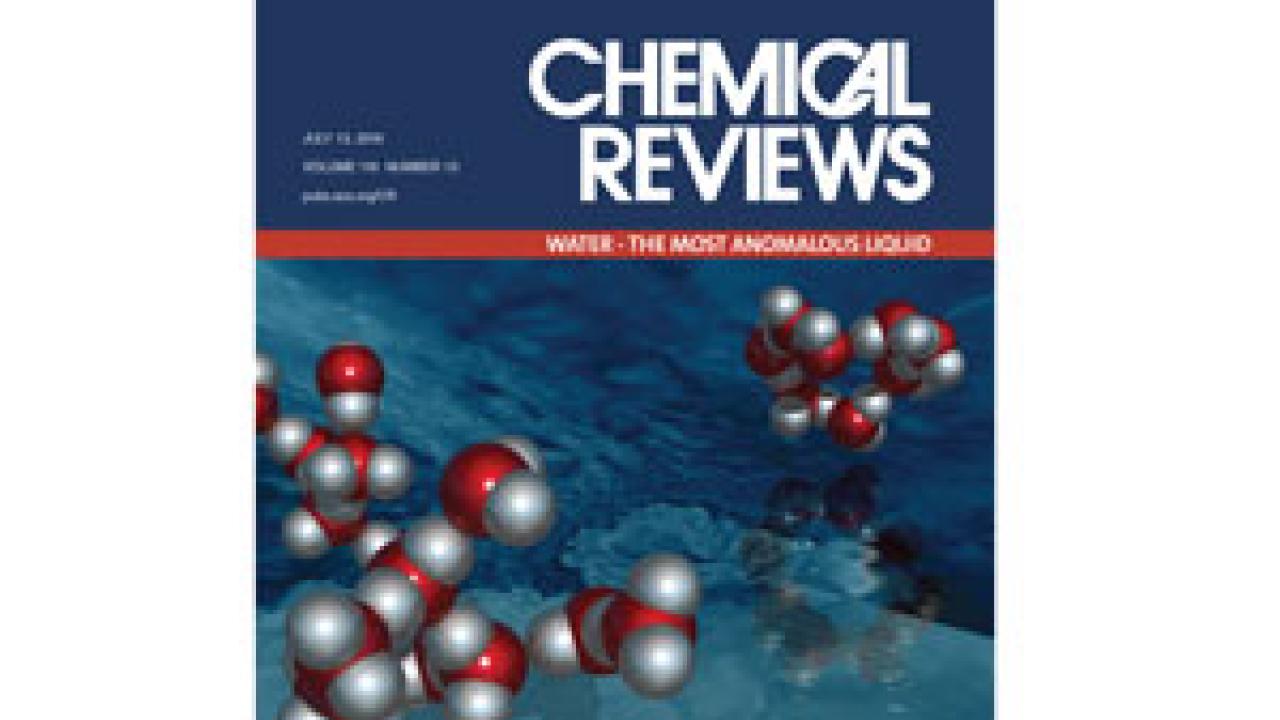
Is there anything simpler than water? The most common liquid on Earth has a well-known molecular composition representing one of the better-investigated liquids in chemistry. Despite long study, understanding the many anomalous properties of water continues to be an active area of scientific research from both theoretical and experimental fronts.
For this reason, Stockholm University hosted a three-week-long scientific workshop in October 2014 on a range of different topics related to water research, organized by the Nordic Institute for Theoretical Physics. The workshop gathered together top chemists and physicists to discuss the open questions in the field, and the attendees contributed their findings this year to a special issue in the journal Chemical Reviews. The resulting publications reported with the theme entitled “Water - The most anomalous liquid,” aim to provide a pedagogical review for newcomers to the field wanting to understand the open issues and challenges.
Ali Hassanali, a researcher in ICTP's Condensed Matter and Statistical Physics section, was invited to the workshop as scientific expert on aqueous solutions and water interfaces, contributing specifically to two different reviews. “During the last week of the meeting we collected and discussed all the literature in the field across the last century, both theoretical and experimental, with the goal of understanding which questions still remain open,” explains Hassanali. “I was in charge of a subgroup, which was specifically focused on protons and hydroxide ions in bulk water, and also participated in another group focusing on the importance of water in protein structure and dynamics.”
One of the aims of the protons and hydroxide ions subgroup was to provide a better characterization of fundamental processes in acid-base chemistry. “If you stretch an O-H bond of a water molecule, it will eventually form a proton and hydroxide ion,” says Hassanali. “Although we teach this in basic chemistry, the mechanisms involved in this process are still not understood. The structure of the proton in water and how to relate it to experimental observables still remains a challenging question. This field has progressed significantly due to computational advancements, which allow for computer simulations of the proton in water.”
Modeling the behavior of protons computationally is very challenging. Unlike other charged particles in solution, such as sodium ions formed by salt dissolved in water, protons do not move via hydrodynamic diffusion. “Proton movements involve the formation and the breakage of covalent bonds and hence require a quantum mechanical treatment,” explains Hassanali. “In addition, the zero-point energy of the O-H bonds -- the lowest possible energy that a quantum mechanical physical system can have -- is very large, meaning that nuclear quantum effects are important for this system.”
The discussion of these fundamental proton movements in bulk water laid the groundwork for more contentious topics, also reported in the review, such as the tendency for protons or hydroxide ions to accumulate at interfaces such as the surface of water. “There is currently a raging debate about whether the surface of water is acidic or basic and both computer simulations as well as experimental studies lead to conflicting opinions. The field is extremely muddy and the meeting helped focus on questions that might help resolve the controversy.” Besides its fundamental interest, an understanding of this has important implications in processes associated with atmospheric chemistry.
For Hassanali’s working group, the review of proton movements in bulk water also established an important background, concerning the mechanisms by which protons interact with proteins. Proteins, and biological molecules in general, are typically found in an aqueous environment, which directly influences both their structure and dynamics. This was the subject of the second review article. Proteins conversely affect the physical properties of the surrounding water too. “There is a lot of interest in the mechanisms by which proteins perturb water. An understanding of these behaviors is fundamental for several processes like protein folding or protein-protein interactions – as in the case of drugs action mechanisms,” says the researcher.
---- Alessandro Vitale
The reviews, titled “Proton and Hydroxide Ions in Aqueous Systems” and “Water Determines the Structure and Dynamics of Proteins”, have been published in the journal of Chemical Reviews (doi: 10.1021/acs.chemrev.5b00736 – doi:10.1021/acs.chemrev.5b00664)













